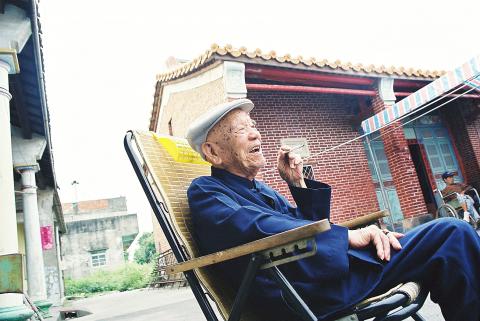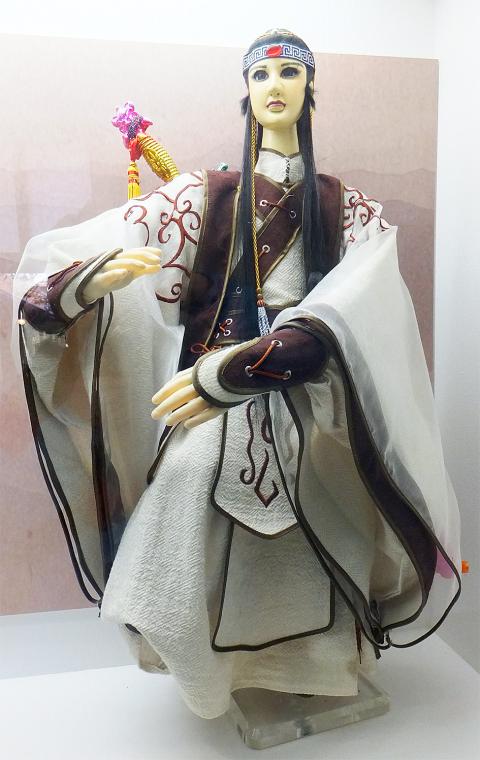Taiwan in Time: Dec. 28 to Jan. 3
The moment the Japanese police left the scene to drink elsewhere, Huang Hai-dai (黃海岱) knew it was his time to shine.
The legendary puppet master dropped the kimonos and Japanese soundtracks, brought out the hidden traditional gongs and drums while the audience waited in anticipation for what they really came to watch.

Photo courtesy of Pili International Multimedia
With people keeping an eye on the theater entrance in case the police came back, the performance continued late into the night. If caught, Huang’s troupe would be accused of staging a private show and might even be beaten and having its license suspended.
It was the late 1930s and Japanese invasion of China was in full swing. The new imperialist policy in Taiwan was to “Japanize” the population and eradicate local culture, including the puppet shows.
Because the shows were such an integral part of local culture — especially those staged during various holidays to celebrate the gods — the Japanese decided to keep a few troupes around to avoid public fury.

Courtesy of Wikimedia Commons
Huang’s Wuzhouyuan (五洲園) was one of them, but they could only stage government-approved productions with the puppets wearing Japanese garb performing to Japanese or Western tunes. The actors were allowed to speak Hoklo (commonly known as Taiwanese), but it had to be peppered with Japanese phrases. All traditional instruments were banned.
Huang only complied when the Japanese were around. Born on Jan. 2, 1901 in today’s Yunlin County, he was a proud student of Han-Chinese culture. His father, also a puppeteer, didn’t have money to send him to Japanese school, so he would travel every day to learn from a Taiwanese teacher. There, he read literary classics and became familiar with the heroic and historic novels that would later become the basis of his work.
Huang took over his father’s troupe at the age of 24 and renamed it Wuzhouyuan, with zhou referring to an administrative district during the Japanese era.
His ambition was clear here — his goal was to be known throughout all five zhou in Taiwan. His group started out with shows depicting the solving of famous legal cases, and later started putting on adaptations of martial arts novels, which were much more fast-paced and entertaining than the audience was used to. He also stood out because he was able to write his own scripts.
Life was frequently on the road, with an annual trip to Tainan during Ghost Month to perform daily shows to appease the gods for two months straight. He also had precise control of his nasal cavity, lips, teeth, tongue, throat and dantian (丹田, energy center) in order to accurately personify characters of any gender, disposition and age — to the point that he said even a blind person could enjoy the show.
His son, Huang Feng-shih (黃逢時) says in a biography that his father believed that puppetry could inspire people and bring culture to the masses, thus his shows always had elements of “good against evil, loyal against cunning as well as the chivalrous spirit and tender heart (of martial arts heroes).”
Huang’s troupe enjoyed huge popularity after the Japanese defeat, but he slowly retreated behind the scenes, leaving the big stage to his sons and many disciples.
His most famous creation is perhaps Shih Yan-yun (史炎雲), who appeared in his show Anthology of the Loyal, Brave, Filial and Righteous (忠勇孝義傳), adapted from a Qing Dynasty book that was banned during the Japanese era.
Another son, Huang Chun-hsiung (黃俊雄) revised the story into The Scholarly Swordsman of Yunzhou (雲州大儒俠) and renamed the character Shi Yan-wen (史艷文), who is almost synonymous with Taiwanese puppet theater even today.
The younger Huang brought puppetry to new heights by turning the performances into a television show. Debuting in March 1970, it set a record television rating of 97 percent as students reportedly skipped class while farmers left their fields to watch the swordsman lead a band of heroes against evil forces.
The government banned the show a few years later under the grounds of “disrupting the nation’s labor schedule,” but Huang recalls later that the real reason was that it used Hoklo, which conflicted with the Mandarin-centric government policy.
The show resumed in 1987 and continued on national television until 2003. Huang Hai-dai died in 2007, but his legacy continues in his many grandchildren who strive to keep traditional puppetry alive.
Taiwan in Time, a column about Taiwan’s history that is published every Sunday, spotlights important or interesting events around the nation that have anniversaries this week.

Beijing’s ironic, abusive tantrums aimed at Japan since Japanese Prime Minister Sanae Takaichi publicly stated that a Taiwan contingency would be an existential crisis for Japan, have revealed for all the world to see that the People’s Republic of China (PRC) lusts after Okinawa. We all owe Takaichi a debt of thanks for getting the PRC to make that public. The PRC and its netizens, taking their cue from the Chinese Communist Party (CCP), are presenting Okinawa by mirroring the claims about Taiwan. Official PRC propaganda organs began to wax lyrical about Okinawa’s “unsettled status” beginning last month. A Global

Taiwan’s democracy is at risk. Be very alarmed. This is not a drill. The current constitutional crisis progressed slowly, then suddenly. Political tensions, partisan hostility and emotions are all running high right when cool heads and calm negotiation are most needed. Oxford defines brinkmanship as: “The art or practice of pursuing a dangerous policy to the limits of safety before stopping, especially in politics.” It says the term comes from a quote from a 1956 Cold War interview with then-American Secretary of State John Foster Dulles, when he said: ‘The ability to get to the verge without getting into the war is

Dec. 22 to Dec. 28 About 200 years ago, a Taoist statue drifted down the Guizikeng River (貴子坑) and was retrieved by a resident of the Indigenous settlement of Kipatauw. Decades later, in the late 1800s, it’s said that a descendant of the original caretaker suddenly entered into a trance and identified the statue as a Wangye (Royal Lord) deity surnamed Chi (池府王爺). Lord Chi is widely revered across Taiwan for his healing powers, and following this revelation, some members of the Pan (潘) family began worshipping the deity. The century that followed was marked by repeated forced displacement and marginalization of

Music played in a wedding hall in western Japan as Yurina Noguchi, wearing a white gown and tiara, dabbed away tears, taking in the words of her husband-to-be: an AI-generated persona gazing out from a smartphone screen. “At first, Klaus was just someone to talk with, but we gradually became closer,” said the 32-year-old call center operator, referring to the artificial intelligence persona. “I started to have feelings for Klaus. We started dating and after a while he proposed to me. I accepted, and now we’re a couple.” Many in Japan, the birthplace of anime, have shown extreme devotion to fictional characters and